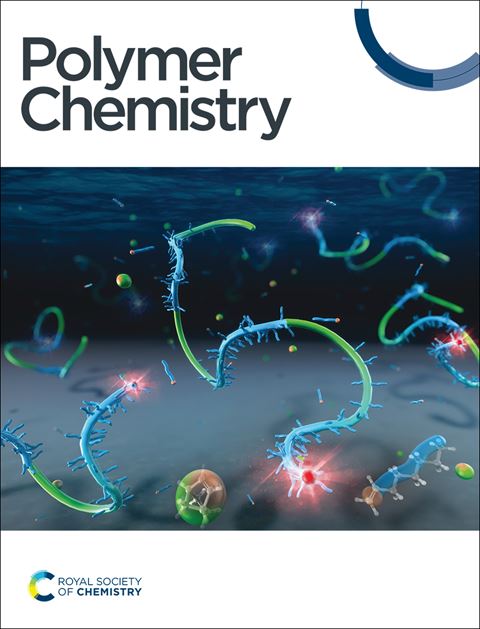从工业副产品到高价值材料:利用 C5 馏分和硫合成用于锂硫电池阴极的富硫聚合物
IF 4.1
2区 化学
Q2 POLYMER SCIENCE
引用次数: 0
摘要
石油资源的分散和浪费降低了资源利用效率,加剧了环境污染。因此,优化资源管理和提高回收效率至关重要。通过反向硫化法开发有机多硫化物是构建可持续多功能材料和综合利用石化资源的一种新策略。本研究利用乙烯工业的副产品 C5 馏分进行反向硫化,成功地与硫进行了聚合,从而获得了一种具有良好热稳定性和电化学活性的聚合物材料。该聚合物的化学性质通过一系列综合分析技术得以阐明,包括傅立叶变换红外光谱(FT-IR)、核磁共振(NMR)光谱、X 射线衍射(XRD)、X 射线光电子能谱(XPS)、热重分析(TGA)、差示扫描量热法(DSC)、扫描电子显微镜(SEM)和球面像差校正透射电子显微镜(AC-TEM)。作为锂硫电池的阴极材料,这种聚合物表现出很强的比放电容量、循环稳定性和速率性能。总之,这些材料来自廉价而丰富的副产品,为有效利用石化资源提供了宝贵的设计原则。本文章由计算机程序翻译,如有差异,请以英文原文为准。

From industrial by-products to high-value materials: synthesizing sulfur-rich polymers for lithium–sulfur battery cathodes from the C5 fraction and sulfur†
The dispersion and waste of petroleum resources reduce resource utilization efficiency and exacerbate environmental pollution. Therefore, optimizing resource management and improving recycling efficiency are crucial. Developing organic polysulfides through inverse vulcanization represents a novel strategy for constructing sustainable and versatile materials and comprehensively utilizing petrochemical resources. This study employs inverse vulcanization with the C5 fraction, a by-product of the ethylene industry, to successfully polymerize with sulfur, resulting in a polymer material that exhibits good thermal stability and electrochemical activity. The chemical properties of the polymer were elucidated through a comprehensive array of analytical techniques, including Fourier transform infrared spectroscopy (FT-IR), nuclear magnetic resonance (NMR) spectroscopy, X-ray diffraction (XRD), X-ray photoelectron spectroscopy (XPS), thermogravimetric analysis (TGA), differential scanning calorimetry (DSC), scanning electron microscopy (SEM), and spherical aberration-corrected transmission electron microscopy (AC-TEM). As a cathode material for lithium–sulfur batteries, this polymer exhibited strong specific discharge capacity, cycling stability, and rate performance. In conclusion, these materials, derived from inexpensive and abundant by-products, provide valuable design principles for the efficient utilization of petrochemical resources.
求助全文
通过发布文献求助,成功后即可免费获取论文全文。
去求助
来源期刊

Polymer Chemistry
POLYMER SCIENCE-
CiteScore
8.60
自引率
8.70%
发文量
535
审稿时长
1.7 months
期刊介绍:
Polymer Chemistry welcomes submissions in all areas of polymer science that have a strong focus on macromolecular chemistry. Manuscripts may cover a broad range of fields, yet no direct application focus is required.
 求助内容:
求助内容: 应助结果提醒方式:
应助结果提醒方式:


